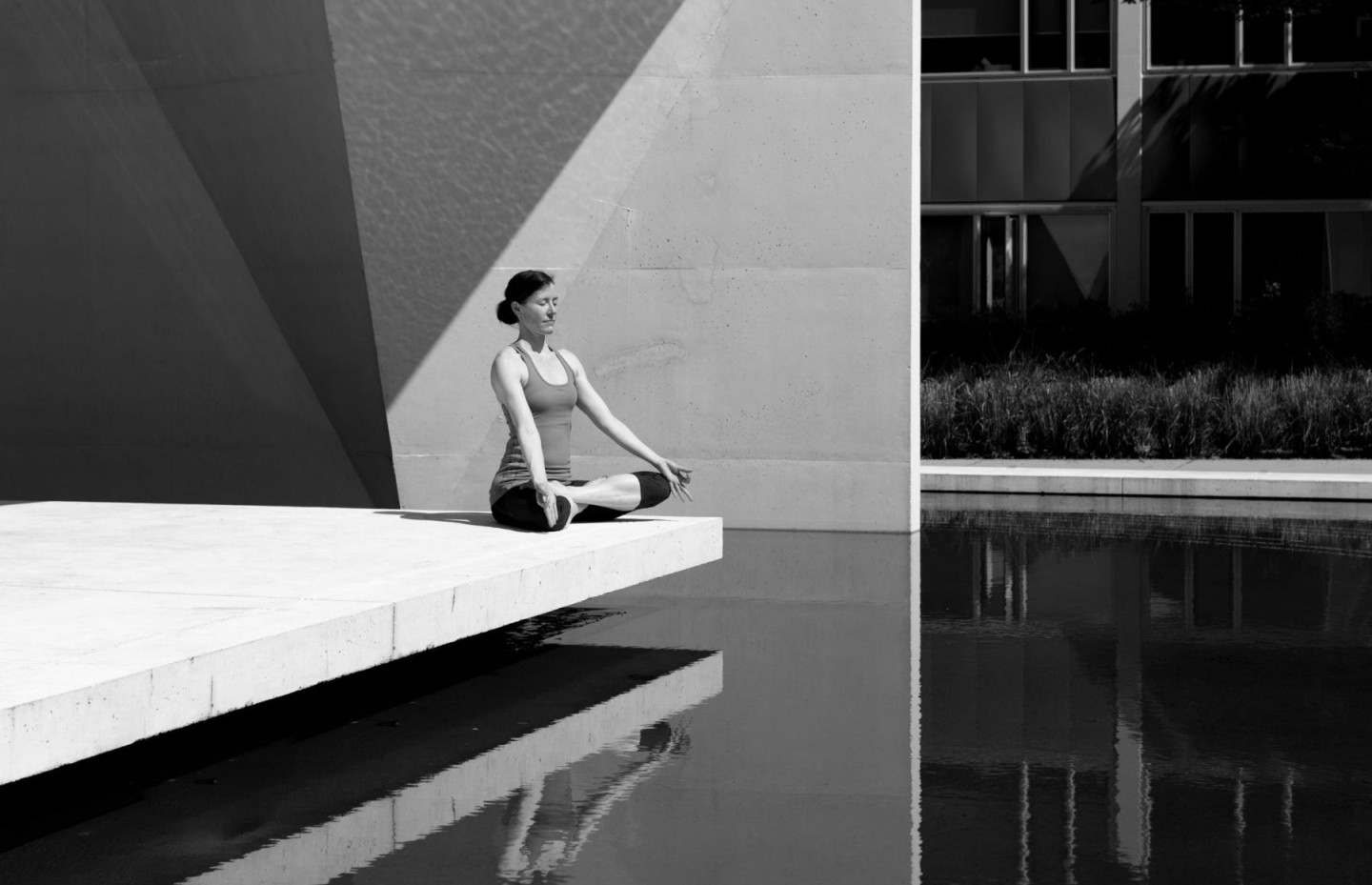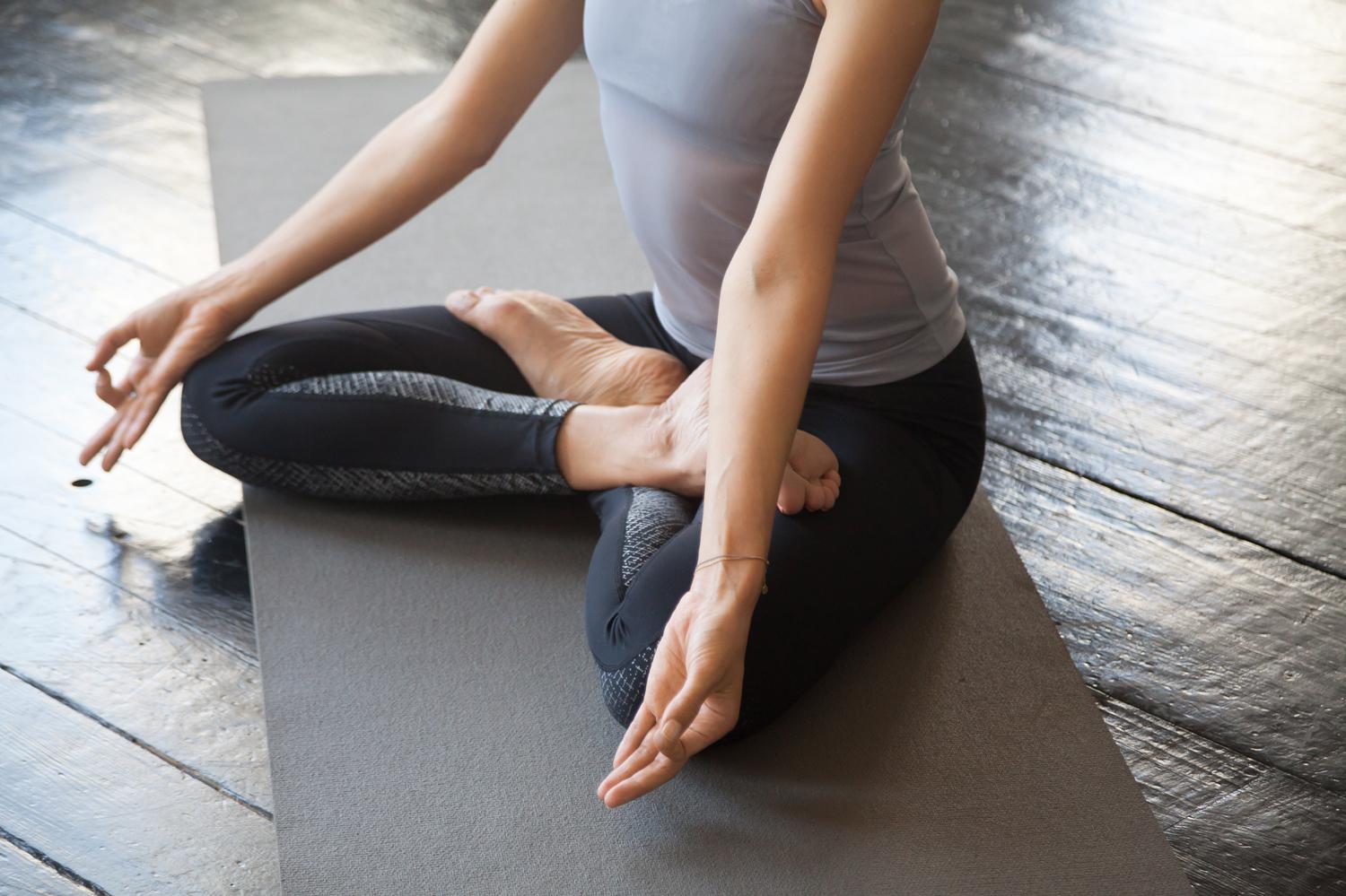
Content:
- What is this
- Benefit
- Harm
- How to sit in lotus position
- Misleading exercises
- Scientific explanation
- Expert commentary
What is lotus position
The lotus pose is one of the main asanas in classical yoga, intended for meditation. This pose is recommended for meditative practices in yogic scriptures such as the Hatha Yoga Pradipika. In the context of yogic philosophy, the lotus flower symbolizes spiritual purity and divine beauty. In Hinduism, many deities are depicted sitting in the lotus position. The image of the lotus flower is also widely used in Hindu texts and poetry as a symbol of the ideal of beauty.
Modern culture has adopted the image of a meditating person in the lotus position; it is found on advertising posters of yoga clubs and on the covers of yoga equipment.
Benefits of Lotus Pose
The lotus pose, or padmasana (padma – lotus, asana – pose) in Sanskrit, is a seated yoga pose that is widely practiced for its physical and mental benefits. While many people believe in the benefits of the lotus position from a holistic and traditional medicine perspective, it is important to note that from an evidence-based medicine perspective, this pose also has a number of mental and physical health benefits.
1. Improved flexibility
Regular practice of the lotus pose and lifting exercises can help improve the flexibility of the hips, knees and ankles, since achieving the full lotus pose requires developing mobility in the hip, knee and ankle joints.
2. Posture and alignment
Practicing the lotus pose helps improve posture and achieve neutral body alignment by strengthening the muscles of the back and pelvis. Working to improve hip mobility and reduce asymmetry can also help improve your posture.
3. Reduce stress
Using various yoga poses, including lotus pose, helps reduce stress and promote relaxation. They help reduce cortisol levels and improve overall health.
4. Concentration and meditation
The lotus is widely used as a meditation pose due to its ability to promote alignment of the spine. And meditation is associated with a variety of cognitive and emotional effects, including improved concentration, reduced anxiety, and improved emotional control.
5. Circulation and circulation
Preparation for being in the lotus position can help improve blood circulation in the pelvis and lower extremities. And improving blood circulation can support good cardiovascular health.
6. Joint health
When approached carefully, gentle stretching and gradually increasing range of motion can be helpful in maintaining joint mobility and reducing the risk of problems associated with lack of adequate range of motion.
It is important to note that the effects of practicing lotus pose vary and not every person will experience all of these benefits. Additionally, as with any physical activity, exercise must be approached with caution, especially if you have a medical condition or physical limitation. If you are considering incorporating the lotus pose into your regular practice, it is recommended that you consult with your physician and a certified yoga instructor to ensure there is no harm to your health.

Harm of lotus position
To safely perform the lotus pose, well-prepared leg joints (ankle, knee, hip) are required. It is also important to understand that not all people have hip joints that are suitable for performing this pose.
Despite the many benefits of the lotus position, it may not be suitable for everyone, so you should be aware of the potential risks.
Potential Risks of Lotus Pose
-
To injury can result from trying to be in the lotus position without sufficient flexibility in the hip, knee and ankle joints. You need to move gradually and according to your body’s limits.
-
Discomfort in the knees. People suffering from knee problems such as arthritis should practice Padmasana with caution. The position puts significant stress on the knee joints, which can lead to an exacerbation of existing problems.
-
Ankle sprain. In the lotus position, the ankles bend, which can lead to sprains or discomfort for people with ankle problems.
-
Discomfort in the pelvis and/or lower back. People who suffer from lower back or pelvic pain may find the lotus pose uncomfortable. It can put pressure on these areas, increasing existing discomfort.
-
Obstruction of blood flow. Staying in Padmasana for long periods of time can result in decreased blood flow to the legs and feet, which can cause numbness, tingling, or discomfort. This is especially true for those who suffer from circulatory problems or diabetes.
-
During pregnancy. Pregnant women should avoid the lotus position, especially later in pregnancy, as it can put pressure on the abdomen and potentially harm the developing fetus.
-
Recent knee or hip surgery. Those who have recently had knee or hip surgery should consult a physician before practicing lotus pose to ensure it is safe for their recovery process.
How to sit in lotus position
Nowadays, this pose is most often performed without tilting the head and placing the hands behind the back. Also note that depending on individual characteristics, it will be more convenient for some to place the right leg on top, and for others the left. After performing padmasana in one of the variations, it is recommended to switch legs and repeat.
-
Sit on the floor in dandasana with your legs extended. Bend one knee to the side and clasp your knee and foot with your hands. Rotate your leg from the hip (not the knee) and point your foot into the crease of the opposite thigh.
-
Bend your other knee, externally rotating your hip, just like you did with the first leg. Raise your shin slightly and move that leg across the opposite one, also placing your foot in the thigh crease.
-
Press your feet toward the top of your thighs and lower your knees toward the floor. Make sure the position does not cause discomfort.
-
Straighten your back, straighten your shoulders and stretch your head up. If your lower back is rounded, you can place a blanket folded several times, a block (yoga brick) or a meditation pillow under your pelvis.
-
After the lotus pose, it is recommended to perform compensatory exercises to restore tone to elongated and relaxed muscles. This could include various variations of glute half bridges, gentle lunges, or deep squats.

Lead-up exercises for lotus pose
Pigeon Pose (Kapotasana)
- Starting position: plank. Place your palms under your shoulder joints, engage your core muscles, keeping your back straight, keeping your legs straight at the knees and shoulder-width apart.
- Bring one leg forward, bringing your knee toward your wrist. Turn your shin inward, at an angle accessible to you, towards the other hand.
- Keeping your pelvis in a neutral position, slowly lower it down. The knee of the “back” leg can be slightly bent and placed. There should be a clear stretch in the buttock and thigh of the front leg.
- Maintain tension in the buttock and thigh of the “front” leg for 45–60 seconds while breathing deeply. With enough range of motion, you can lower yourself onto your elbows and point your chest towards the floor, adding intensity to the stretch.
- Smoothly rise to the starting position and repeat the exercise on the other leg.
- Rest 1 minute.
- Perform two to three repetitions on each side.
Exercise “Mermaid”
…
